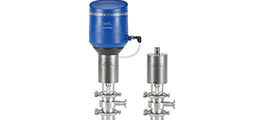
The Guide to Choosing Vacuum Breakers for Sanitary Processing
All food, beverage, and dairy sanitary processing systems work to protect their pasteurization processes from vacuum conditions while maintaining costs and keeping processes efficient. Vacuum Breaker Valves are a cost-effective means to prevent vacuum during all phases of production.


